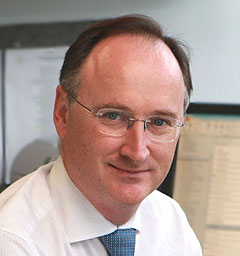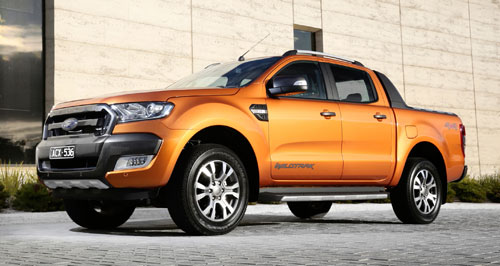Make / Model Search
News - General News - SalesAnother 1.1m-plus market in 2017: FCAIBye bye bye: Australia has finished 2016 on another record-setting 1.178 million cars sold, with 2017 expected to once again finish around that high mark despite the closure of local manufacturing. Strong market forces to hold sales high, but no major change expected5 Jan 2017 FEDERAL Chamber of Automotive Industries (FCAI) chief executive Tony Weber has predicted that new vehicle sales will only slightly rise in 2017 following a nominal 2.0 per cent increase in 2016 to a record 1.178 million units. Mr Weber said he expected another “1.1 million plus” market is on the cards for the year ahead, but he ruled out stronger growth than that seen in 2016 and insisted that a small percentage growth was to be celebrated. “You’ve got a mature market and 2.0 per cent growth in a mature market is quite impressive,” Mr Weber told GoAuto at a media event in Sydney. “I think we should call this for what it is: this is a remarkable number. We had three out of the last four years in growth, and growth on growth is remarkable and I don’t see that stopping. In a mature market such as this, to get something higher than that would be quite extraordinary.” He further claimed that because interest rates were at record lows, employment was at record highs and competition was incredibly fierce, no major market forces were expected to dramatically push new vehicle sales growth higher. “There’s nothing there that can really stimulate it (the market) to the extraordinary,” Mr Weber continued. “(But) I don’t think there’s anything out there that is going to stand in the way of another really solid year again.” However, in a calendar year that will see the demise of the local manufacturing industry when Holden and Toyota shutter operations in the fourth quarter, Mr Weber expected that the events would have little impact on new vehicle sales.  Left: FCAI chief executive Tony Weber. Left: FCAI chief executive Tony Weber.“All three domestic brands (Ford, Holden and Toyota) from where I sit have strategies in place to provide replacement vehicles to the market,” he said. “I think for the consumer it will be very transparent, the change from domestic manufacturing to full importation, remembering that domestic manufacturing currently represents less than 10 per cent of sales (and) there is less than 10 vehicles produced domestically.” In 2016 the locally produced Toyota Camry and Holden Commodore ranked inside the top 10 best sellers, with 26,485 and 25,860 sales respectively, placing them sixth and seventh in the top-selling model rankings. Last year the Camry represented 53.1 per cent of the medium car under $60,000 segment according to VFACTS, while the Commodore snared a 70.9 per cent share of the large car under $70,000 class. Asked whether VFACTS would merge the medium and large segments in the future given the dominance of two locally produced nameplates – although each with imported replacements imminent – Mr Weber replied: “We constantly look at the segmentation of VFACTS and I think that the segments blur over time.”“The HiLux that today is the biggest selling car is in some ways, go back 30 years, a substitute for what was a Commodore or Falcon wagon for families,” he continued. “Products such as the ute are now not the classic workhorse, they have all the refinement of any sedan and people vote with their feet. The market segmentation over time changes naturally.” Mr Weber instead reiterated that the drivers of new vehicle sales growth would continue to come from such a “blur” of segments, fueling a prediction that SUV sales would overtake passenger vehicles in either 2018 or 2019. “What is of particular note last year was the marked shift in the dynamic of our new-vehicle market,” he argued. “This has been treated by the comfort, sophistication and versatility of the new light-commercial vehicles and SUVs. Passenger vehicles are still king across the VFACTS segments, but for how long?“SUVs are a fast growing segment and the rate of acceleration will be watched with interest throughout 2017. In 1990, SUVs accounted for 6.6 per cent of the market. By 2000 this almost doubled to 13.0 per cent. By 2010 it was 22.9 per cent and in 2016 it was an extraordinary 37.4 per cent of the market. “It’s less than 4.0 percentage points between SUVs and passenger vehicles now, and if you saw that continue you’d probably see it happen next year or the following year. “It’s not far off that SUVs become the dominant segment.” SUV sales soared to 441,017 units in 2016, up from 408,471 in 2015 and increasing its overall new-vehicle market share from 35.4 per cent to 37.4 per cent but passenger vehicles dropped from 515,683 and 44.6 per cent share to 486,257 and 41.3 per cent over the same period. The rise in light-commercial vehicles almost rivalled that of SUVs, with the segment moving from 199,070 sales and 17.2 per cent share in 2015 to 217,750 and 18.5 per cent in 2016 topped by the Toyota HiLux and Ford Ranger in first and fourth positions in the overall market. “How remarkable it is that we have two light-commercial vehicles in the top-five selling vehicles in this country,” Mr Weber added. “Who would have guessed that a decade ago. This demonstrates the structural changes that have taken place in the market.” Mr Weber also used the media event to reiterate the FCAI’s calls to the federal government to abandon both the Luxury Car Tax (LCT) and 5.0 per cent import tariff, particularly in a year that will end without any local production. “It (LCT) has no economic merit to it and it distorts people’s behaviour in things like reducing the number of safety features in their cars (they can afford) and environmental features,” Mr Weber stated. “When we move to full import we should remove the 5.0 per cent tariff, remembering that with free trade agreements (FTAs) around two thirds of vehicles coming into this country are tariff-free to date. “To have one-third of vehicles come in with 5.0 per cent tariff seems a very foolish position to me and once again just makes vehicles more expensive for consumers.” He also clarified that if the abolition of the LCT were to occur, the FCAI would demand manufacturers pass on the savings to consumers. “Because the market is so competitive, manufacturers don’t have an option not to pass on the savings if they came about due to the abolition of the Luxury Car Tax,” Mr Weber said. “It goes without saying.” While abolishing the LCT does not look like it will occur in the near future, neither will the Australia-Europe free trade agreement happen anytime soon and “Brexit won’t help, there’s no doubt about that,” said Mr Weber. “But there are negotiations beginning with Europe on a free trade agreement (and) obviously as an industry we’d like it to be progressed as quickly as possible. (But) these things can take a long time, they’re complex negotiations.” With US president-elect Donald Trump rallying against the North American Free Trade Agreement (NAFTA), its abandonment means that vehicles from both Europe and the US would continue to have the 5.0 per cent tariff imposed.  Read more |
Click to shareGeneral News articlesResearch General News Motor industry news |










Facebook Twitter Instagram